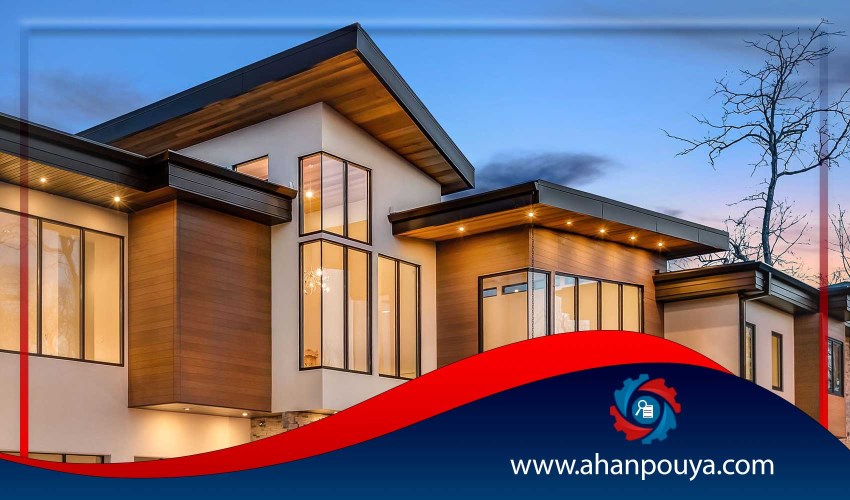
With the growth of the construction industry and the demand for modern and durable materials, fiber cement has become one of the most widely used materials in the building sector. This composite substance, also known as fiber cement panel or cellulose fiber cement board, has gained a special position in construction projects due to its high resistance to moisture, fire, decay, and insects.
In this article from Pooya Saderat, we provide a comprehensive overview of fiber cement, its advantages, disadvantages, types, applications, and key points for purchase and installation.
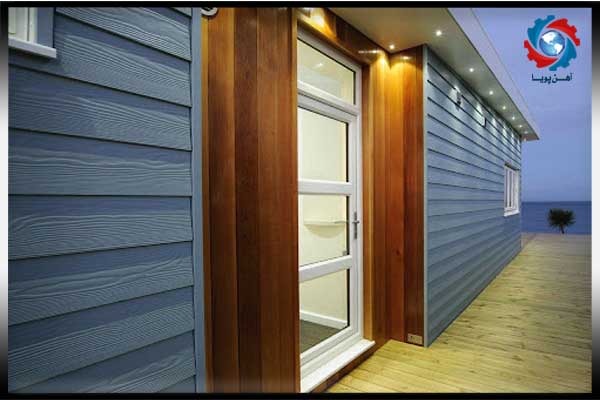
Fiber cement board is a type of construction panel made from a mixture of Portland cement, cellulose fibers, and mineral additives. The fibers enhance the board’s physical structure, increasing its resistance to pressure, impact, and temperature changes. This material is primarily used as an alternative to traditional building materials such as wood, gypsum, MDF, and plaster.
Portland Cement: The core component that provides the panel's hardness and strength.
Cellulose Fibers: Typically derived from plant sources like wood, they improve flexibility and reduce brittleness.
Mineral Fillers: Such as silica, lime, and mica, which improve thermal and mechanical performance.
Chemical Additives: Added to enhance adhesion and resistance to moisture and fire.
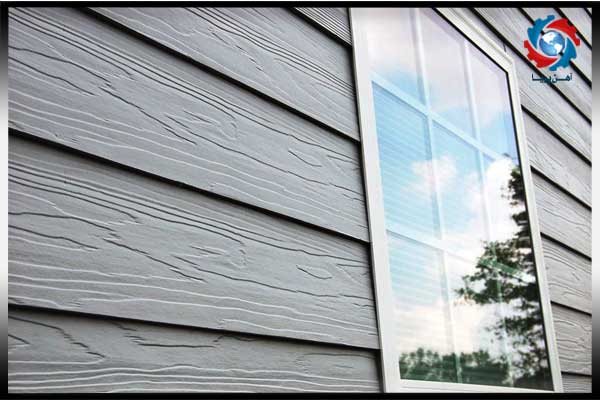
Moisture Resistance: Unlike wood and gypsum, fiber cement resists water and steam and does not deform.
Fire Resistance: These panels are non-combustible and help prevent flame spread.
Long Lifespan: Its strong structure increases service life in harsh environmental conditions.
Mold and Mildew Resistant: Thanks to its inorganic composition, it cannot be decomposed by microorganisms.
Paintable and Customizable: Can be painted in various colors or manufactured with wood, stone, or other patterns.
Sound and Thermal Insulation: Although not the best standalone insulator, it performs well when combined with other layers.
Heavier compared to some modern materials
Requires special cutting tools (like diamond blades)
Higher cost than some alternatives like PVC or MDF
Demands precise and expert installation for optimal performance
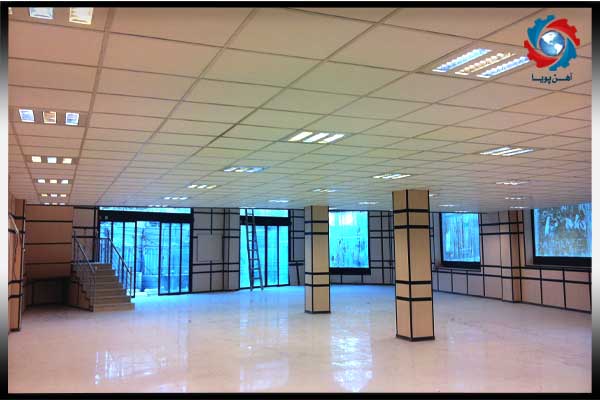
Flat Panel: Smooth and uniform, suitable for both interior and exterior walls.
Textured Panel: Designed with various surface patterns like wood or stone, ideal for building façades.
Ceiling Board: Thinner and lighter, used for false and decorative ceilings.
Fire-Resistant Fiber Cement: Includes specific additives to increase heat resistance.
Pre-Colored or Coated Panels: Factory-finished panels that do not require painting.
Exterior wall cladding (dry façade systems)
Interior wall coverings as a substitute for gypsum plaster
False and decorative ceilings
Flooring in dry and humid environments
Lightweight partitions and non-load-bearing walls
Bathrooms and kitchens due to high moisture levels
Base layers for composite or hybrid façades
Fiber cement is produced using two main methods:
This is the most traditional and widely used method globally. Fiber cement, a combination of durability, beauty, and resistance for the new generation of construction!In this process, raw materials are mixed with water to create a slurry, which is applied in thin layers on rotating conveyor belts. These layers are then wound onto a forming roll until the desired thickness is achieved, pressed, and dried.
n this method, the fiber cement mixture is pushed through precision molds under high pressure, producing panels with smooth, seamless surfaces. This process is ideal for high-end decorative panels.
The Hatschek process is suitable for mass production but produces a rougher finish, while the extrusion process delivers a finer surface and is better suited for decorative applications.
To ensure the quality of fiber cement, adherence to national and international standards is essential. Key standards include:
EN 12467 (European Standard): Covers mechanical strength, water resistance, fire resistance, and bending capacity.
ASTM C1186 (U.S. Standard): Addresses compressive strength, water absorption, thermal expansion, etc.
ISIRI 13480 (Iran National Standard): Serves as the quality benchmark for local manufacturers.
Complying with these standards ensures that the product can withstand environmental factors and is suitable for both indoor and outdoor use.
Fiber cement is usually installed on galvanized steel or wooden substructures. Installation steps include:
Preparing and leveling the surface
Installing support profiles
Cutting panels with suitable tools
Fastening panels to the framework using screws
Sealing joints and waterproofing
Final painting or surface finishing
Reputable Brand: Buy from certified manufacturers with national/international accreditation.
Appropriate Thickness: Depending on usage, fiber cement panels come in various thicknesses (4 to 20 mm).
Mechanical and Chemical Resistance: Particularly important for humid or high-temperature regions.
Value for Money: Some brands are overpriced without offering better quality.
In today’s construction industry, sustainability is a key factor. Fiber cement offers notable environmental advantages:
Fully Recyclable: Its components can be reused after the end of the product’s lifecycle.
Asbestos-Free: Unlike older materials, fiber cement does not contain carcinogenic or harmful substances.
Lower Energy Consumption: Compared to traditional materials, production requires less energy.
Durability and Low Maintenance: Longer life span reduces the need for frequent repairs or replacement.
These qualities make fiber cement a popular choice in green buildings and LEED-certified construction projects.
n recent years, Iran’s fiber cement market has witnessed significant growth. Many local manufacturers now produce high-quality fiber cement boards at competitive prices. The product is also being exported to neighboring countries such as Iraq, Afghanistan, Armenia, and the Persian Gulf states.
Globally, fiber cement is recognized as one of the most important next-generation construction materials, especially in developed countries where dry façade systems are widely used.
Fiber cement is a cutting-edge and multi-purpose building material that serves as an excellent replacement for many traditional construction materials. With the right type, trusted brand, and proper installation, you can ensure long-term durability, stability, and visual appeal for your projects.
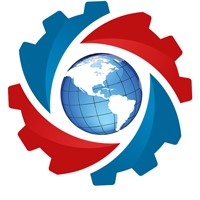
Ahan Pouya with more than a decade of best-selling experience, adheres to professional and ethical principles in the field of selling and buying at inside and outside the borders of Iran, helping you in the steel industry.